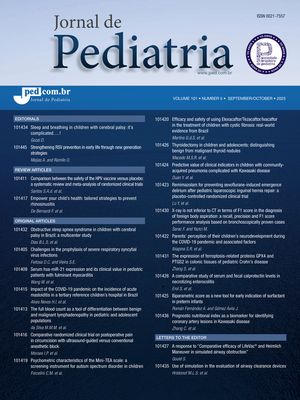
To review the various challenges of providing mechanical ventilation to pediatric patients with diseases of increased airway resistance, diseases of abnormal lung compliance or normal lungs.
SourcesOriginal data from our pediatric intensive care unit and animal research laboratory. Relevant articles included in the MEDLINE electronic database during the last 10 years. Also included were book chapters and definitive studies, as judged by the authors, in the fields of asthma, acute respiratory distress syndrome, mechanical ventilation, ventilator-induced lung injury and permissive hypercapnia.
Summary of the findingsMechanical ventilation of patients with diseases of increased airway resistance should center on avoidance of dynamic hyperinflation, allowing complete exhalation prior to the initiation of a subsequent breath and permissive hypercapnia. Positive end-expiratory pressure should be used sparingly to prevent atelectasis and facilitate synchrony in spontaneously breathing patients. Mechanical ventilation of patients with diseases of abnormal lung compliance should take into consideration the inhomogeneous distribution of lung disease. Focus should be on avoidance of volutrauma and atelectrauma that could result in ventilator-associated lung injury.
ConclusionsThe last decade was marked by significant advances in the management of pediatric respiratory failure. The choice of mechanical ventilation strategy can significantly influence the subsequent course of lung injury. Mechanical ventilation can no longer be viewed simply as a harmless support modality that is employed to keep patients alive while disease-specific treatments are used to ameliorate the underlying pathology.
Revisar os vários desafios existentes na ventilação mecânica de pacientes pediátricos com doenças de resistência elevada das vias aéreas, complacência pulmonar anormal ou pulmões normais.
Fontes dos dadosDados originais coletados em nossa unidade de tratamento intensivo pediátrico e em nosso laboratório de pesquisa animal. Artigos pertinentes incluídos na base de dados MEDLINE durante os últimos 10 anos. Também foram incluídos capítulos de livros e estudos definitivos, a critério dos autores, sobre asma, síndrome do desconforto respiratório agudo, ventilação mecânica, lesão pulmonar induzida pelo ventilador e hipercapnia permissiva.
Síntese dos dadosO foco da ventilação mecânica de pacientes com doenças que resultam em resistência elevada das vias aéreas deve centrar-se na hipercapnia permissiva e prevenção de hiperinsuflação dinâmica, permitindo exalação total antes do início da inspiração subseqüente. A pressão expiratória final positiva deve ser usada comedidamente para evitar atelectasia e facilitar a sincronia em pacientes com respiração espontânea. A ventilação mecânica de pacientes com doenças de complacência pulmonar anormal deve levar em consideração a distribuição heterogênea da lesão pulmonar. O enfoque deve ser na prevenção de volutrauma e atelectrauma, que podem resultar em lesão pulmonar associada ao ventilador.
ConclusõesA última década foi marcada por significativos avanços no manejo de insuficiência respiratória em pacientes pediátricos. A escolha da estratégia de ventilação mecânica pode influenciar significativamente o curso subseqüente da lesão pulmonar. A ventilação mecânica não pode ser vista apenas como uma mera modalidade de suporte usada para manter os pacientes vivos enquanto que tratamentos específicos à doença são empregados para melhorar a patologia de base.








